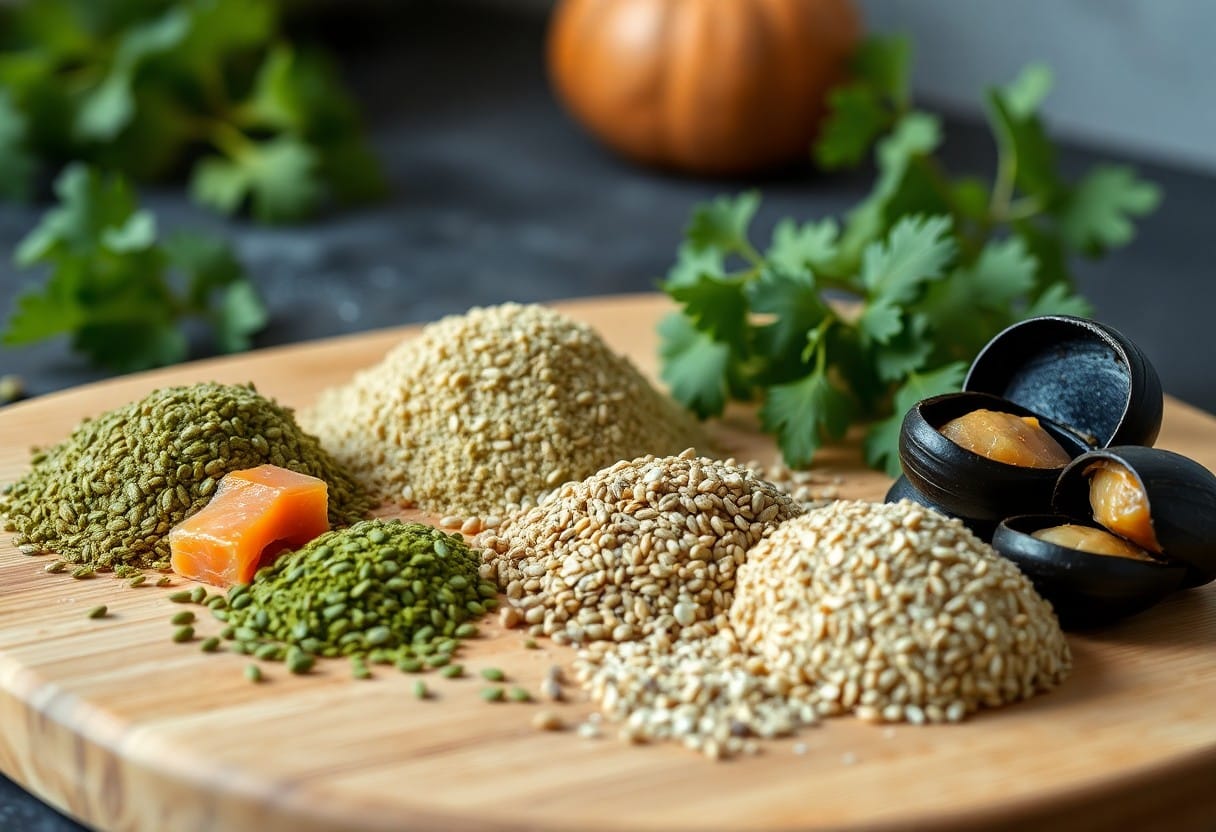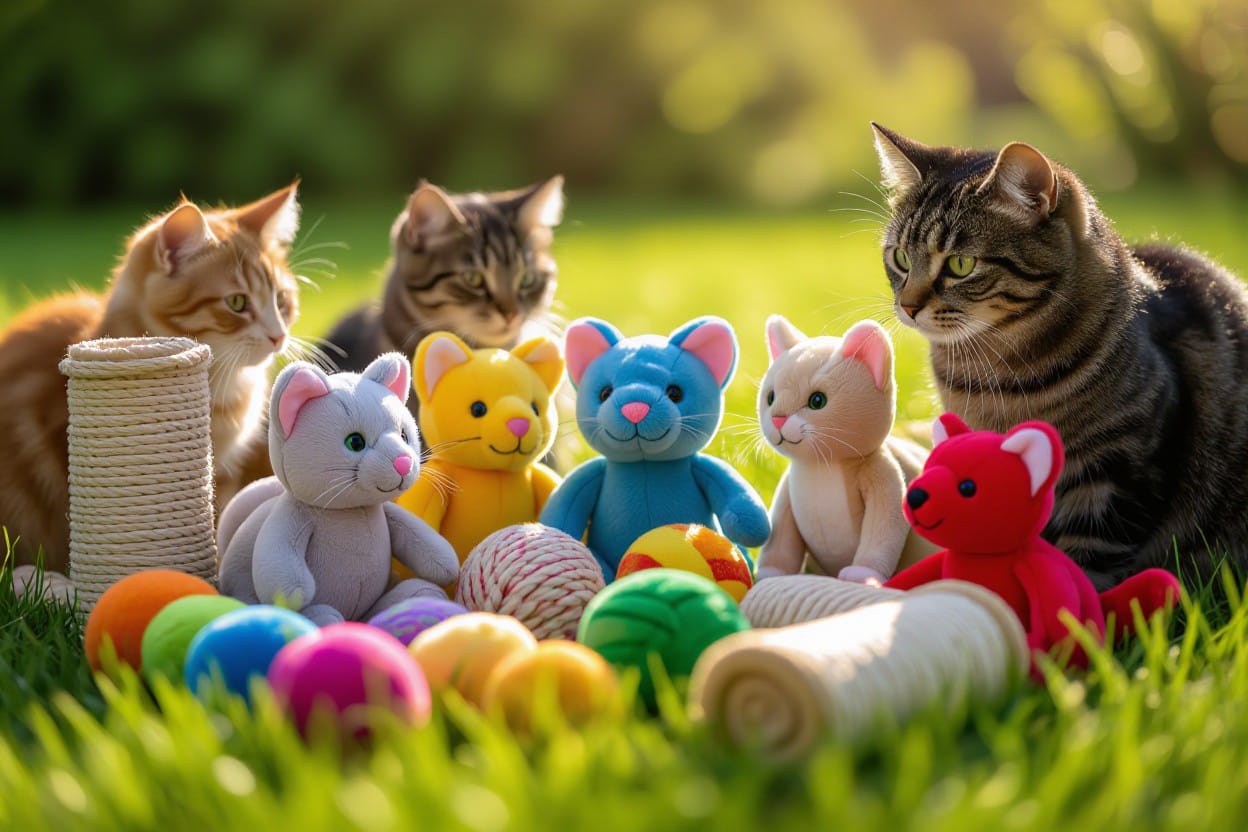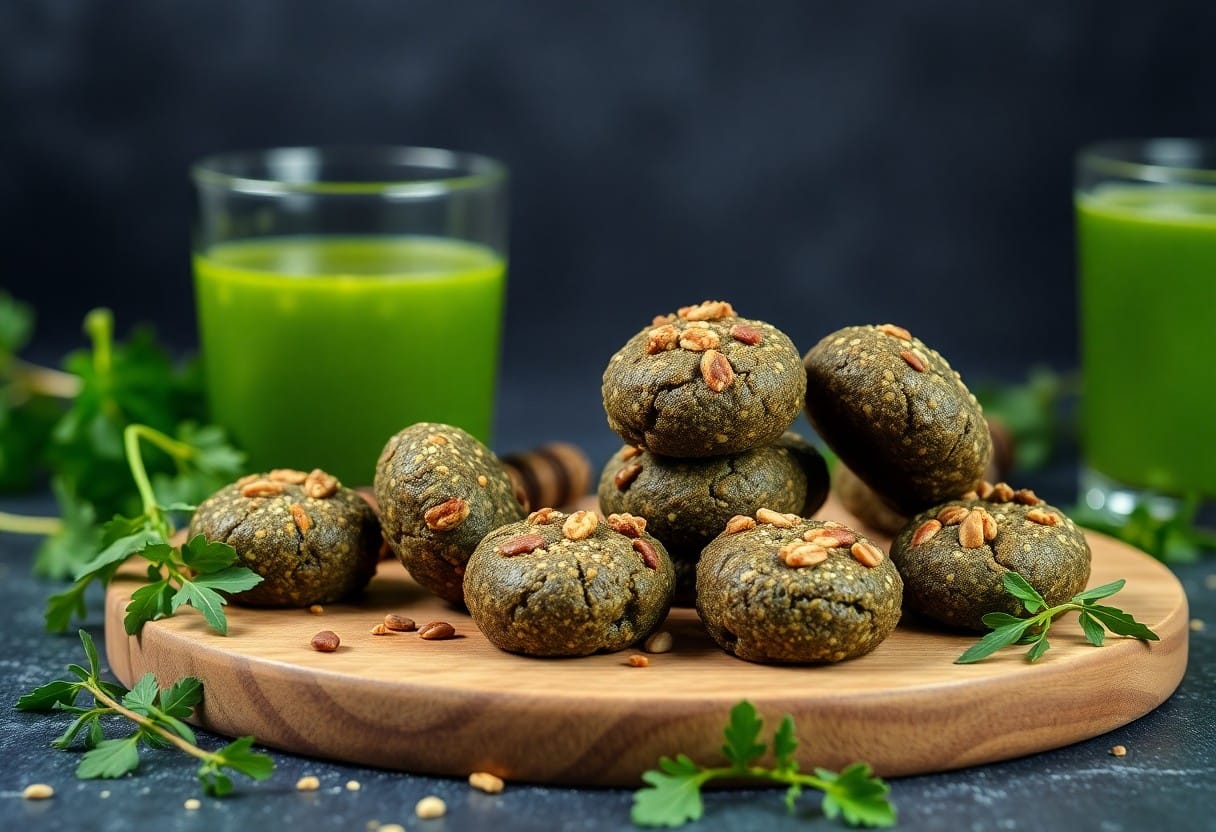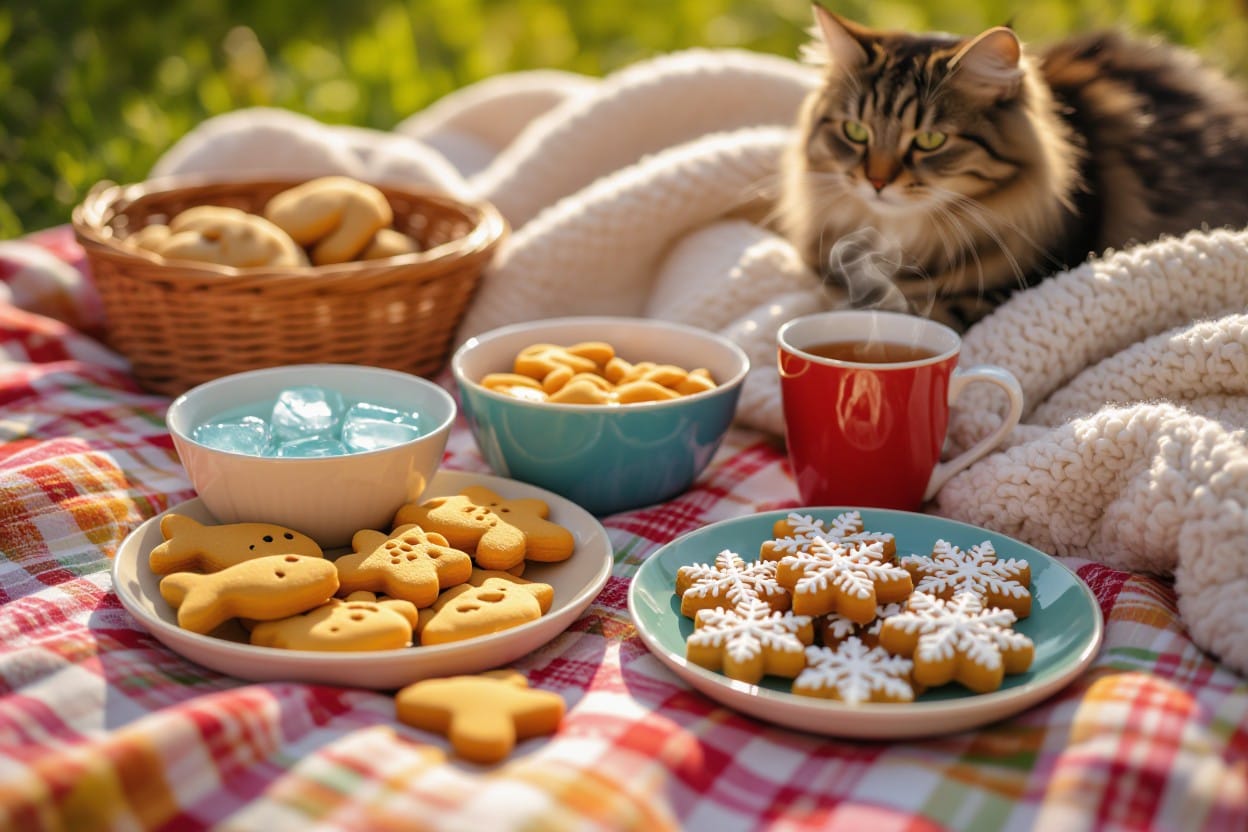Most cat owners want to provide their furry friends with delicious and nutritious treats, but have you considered using uncommon ingredients to make your cat’s snacks truly exceptional? By incorporating unique components like pumpkin puree, chickpeas, and even catnip oil, you can enhance the flavor and health benefits of their treats. In this blog post, we’ll explore how these ingredients not only tantalize your cat’s taste buds but also contribute to their overall well-being. Get ready to elevate your homemade treats to extraordinary levels!
Key Takeaways:
- Incorporating superfoods like pumpkin, blueberries, and spinach can enhance the nutritional value of your cat’s treats while providing unique flavors.
- Consider using proteins such as freeze-dried insects or fish, which can be a novel protein source that appeals to cats and offers beneficial nutrients.
- Experimenting with natural flavors and supplements, like catnip or probiotic ingredients, can elevate the taste and health benefits of homemade treats.
Whimsical Protein Sources: Beyond Conventional Meats
Exploring unique protein sources can elevate your cat’s treats and make mealtime more exciting. Consider ingredients like wild-caught fish, grass-fed lamb, or even alpaca meat, which offer not only distinct flavors but also specific nutrients that conventional meats may lack. These uncommon options can introduce your feline to novel tastes and bolster their protein intake, supporting their overall health and wellbeing. As you expand your ingredient choices, pay attention to your cat’s preferences and dietary needs.
Novel Ingredients: Insect-Based Proteins
Insect-based proteins are gaining popularity as an environmentally friendly alternative to traditional meat sources. Ingredients like cricket flour or mealworms provide a complete amino acid profile and are rich in vitamins and minerals. Not only do these proteins offer exceptional nutrition, but they also require significantly less land and water to produce compared to conventional livestock. Transitioning your cat to insect-based treats could promote sustainability while satisfying their protein requirements.
Organ Meats: Nutritional Powerhouses
Organ meats, such as liver, kidney, and heart, are often overlooked but pack a serious nutritional punch for your cat. These parts of the animal are incredibly rich in necessary vitamins and minerals, including vitamin A, B vitamins, iron, and zinc. Regularly including organ meats in your cat’s diet may enhance their energy levels, improve coat health, and boost their immune system. Just a small amount can provide concentrated nutrients that support various bodily functions, making organ meats a valuable addition to their treat rotation.
Flavor Boosters: Herbs and Spices That Cats Crave
The flavor profile of your cat’s treats can reach new heights with the inclusion of certain herbs and spices known to delight their taste buds. While most cats appreciate the foundational proteins in their snacks, adding in flavor boosters such as dried parsley, thyme, or even cinnamon can create a unique culinary experience. These ingredients not only enhance taste but may also offer additional health benefits, such as improved digestion and freshened breath, making every treat a dual-purpose delight.
Catnip vs. Catmint: The Scented Showdown
Both catnip and catmint hold a special place in the hearts of feline enthusiasts. While catnip has garnered fame for its euphoric effects on cats, catmint delivers a more subtle sensory experience. If your feline friend responds positively to catnip, chances are that introducing catmint could also offer a delightful treat variation, garnering interest through its alluring scent and flavor.
Fun with Fennel: Unconventional Flavor Additions
Fennel might not be the first herb that comes to mind for making cat treats, but its unique flavor and potential health perks are worth exploring. Rich in antioxidants and vitamin C, fennel can enhance the nutritional profile of your cat’s treats while providing digestive support. Cats are typically curious creatures, and the anise-like aroma of fennel might just pique their interest enough to make them eager to try something new.
Integrating fennel into your cat’s treats can be surprisingly easy. You could use fresh fennel fronds as a garnish or add a small amount of finely chopped fennel bulb to homemade mixes. The herb’s subtle sweetness can complement meat and fish flavors, creating an irresistible blend that tempts even the pickiest of eaters. Just be sure to keep portions moderate, as too much fennel could lead to digestive upset in sensitive cats. Elevating their culinary experience with this unconventional herb allows you to create treats that not only stand out but offer vital nutrients as well.
Nutritional Enhancements: Superfoods for Feline Health
Enhancing your cat’s treats with superfoods not only boosts flavor but also contributes to their health. These ingredients, packed with necessary nutrients, can support your feline’s immune system, improve coat health, and even promote better digestion. Incorporating superfoods into homemade treats can lead to a happier and healthier cat, making snack time beneficial as well as enjoyable.
Ancient Grains: Quinoa and its Benefits
Quinoa, often hailed as a super grain, offers a wealth of benefits for your cat’s diet. This gluten-free grain is rich in protein, necessary amino acids, and fiber, promoting healthy digestion and supporting muscle growth. Its high nutrient density makes it an excellent addition to treats, allowing you to craft snacks that are not only tasty but also contribute to overall well-being.
Marine Wonders: Seaweed’s Surprising Perks
Your cat can greatly benefit from the inclusion of seaweed in their treats. This marine superfood is a fantastic source of vitamins and minerals, particularly iodine, which plays a vital role in thyroid function. Additionally, seaweed can help maintain dental health by reducing plaque buildup, while also acting as a natural source of antioxidants that boost immunity. Its unique texture can also create an engaging experience for your furry friend as they munch away.
Furthermore, seaweed contains necessary fatty acids that can promote a shiny coat and healthy skin, making it a dual-purpose treat ingredient. Varieties like spirulina and dulse offer even more specialized benefits, such as anti-inflammatory properties and support for joint health. With such diverse attributes, incorporating seaweed into your cat’s treats not only flavors them but also transforms them into holistic powerhouses that help nourish your beloved pet from the inside out.
Texture Richness: Unusual Add-ins for Treat Satisfaction
Textures add an undeniable richness to your cat’s treats, elevating their overall experience. By introducing uncommon ingredients like puffed quinoa or crushed pumpkin seeds, you can create a delightful contrast that piques your feline’s interest. These interesting add-ins not only offer distinctive crunchiness but also cater to your cat’s natural instincts to chew and play, promoting a more engaging treat time.
Crunchy vs. Chewy: The Role of Unique Textures
The interplay between crunchy and chewy textures can define your cat’s enjoyment. A blend of crunchy elements, such as dehydrated vegetables or freeze-dried meats, alongside chewy ingredients like nut butter or gelatin, provides a captivating experience that keeps your cat stimulated and satisfied. Engaging different chewing habits helps maintain dental health while making treat time more exciting.
Vegetable Surprises: Adding Fiber and Flavor
Incorporating vegetables into your cat’s treats enhances both their nutritional profile and texture. Ingredients like sweet potatoes, green peas, or carrots are packed with fiber, promoting digestive health while adding unique flavors. These vegetable surprises not only offer important vitamins and minerals but also create varying textures that your cat will love to explore.
For example, sweet potatoes can be pureed for a smooth texture or cubed for a hearty chew, adding versatility to treat recipes. Green peas lend a pleasant pop when chewed, providing a fun element of surprise. By incorporating these vegetables, you’ll not only ensure your treats are enjoyable but also align them with your cat’s dietary needs, offering a wholesome snacking option brimming with health benefits.
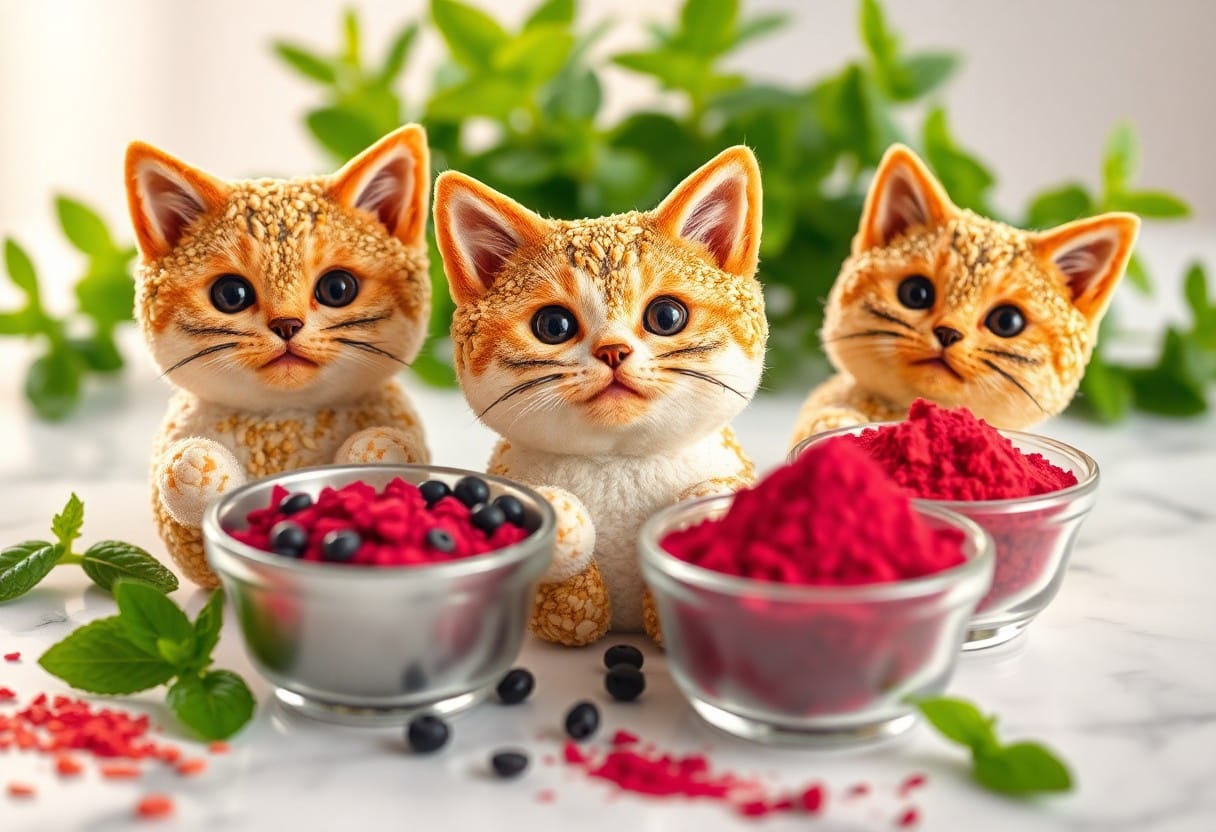
The Art of Presentation: Making Treats Visually Tempting
Transforming your homemade cat treats into a visual feast can significantly increase their appeal. By focusing on the aesthetics, you not only make them irresistible to your feline friend but also create a delightful experience for yourself. Using vibrant colors, innovative shapes, and unique packaging elevates the presentation, making treat time a celebration. As cats are naturally curious creatures, a visually appealing treat may entice them even more, encouraging them to enjoy these extra special goodies you’ve crafted.
Colorful Combinations: The Psychology of Food
Incorporating a variety of colors into your cat treats can stimulate interest and receptivity. Just like humans, cats are influenced by color, and a striking palette can enhance their excitement. For instance, using ingredients like sweet potato, beet puree, or spinach not only adds nutritional value but also infuses vibrant hues that draw attention. A colorful treat can create an association of fun and enjoyment in your cat’s mind, making them more likely to indulge.
Innovative Shapes: Why Form Matters
The shape of your cat’s treats plays a crucial role in their appeal and overall enjoyment. Cats often respond positively to playful, unique forms that mimic their natural instincts, such as fish, birds, or even cartoonish figures. Treats made in fun shapes can trigger curiosity and add an element of entertainment during snack time, as your cat paws at or chews on whimsically shaped rewards, turning a simple treat into a playful experience.
For example, using cookie cutters to create fish or heart shapes not only enhances the visual appeal but also invites playful engagement while your cat enjoys the treat. Research indicates that innovative shapes can evoke intrigue and enthusiasm, motivating your pet to interact more with their food. You might even consider rotating shapes regularly to maintain interest over time. Ultimately, the combination of shape and flavors can transform treat-giving from a mundane task into an enjoyable routine that you and your feline companion look forward to.
Summing up
The right uncommon ingredients can transform your cat’s treats from ordinary to extraordinary. By incorporating nutrient-rich options such as pumpkin, fish oil, or spirulina, you not only enhance the flavor but also boost your cat’s health. Exploring unique ingredients like catnip, lavender, or even goat’s milk can provide additional benefits and stimulate your feline’s senses. When you take the time to experiment with these unusual components, you create a delightful and nutritious snack that your cat will eagerly anticipate. Elevate your home baking and discover the joy of making treats that truly stand out for your furry friend.
Q: What are some uncommon ingredients that can enhance the flavor of my cat’s treats?
A: Several uncommon ingredients can elevate the taste of your cat’s treats. Consider using freeze-dried meat, such as chicken or salmon, which not only adds rich flavor but also provides high protein content. Additionally, l-theanine, found in green tea, can be included in small amounts for its calming effects, making treat time enjoyable without overstimulation. Another option is to add nutritional yeast, which offers a cheesy flavor that many cats love and is packed with B vitamins.
Q: How can I incorporate superfoods into my cat’s treats?
A: Superfoods like pumpkin, chia seeds, or spirulina can easily be added to your cat’s treats. Pumpkin is a great source of fiber and can aid digestion, while chia seeds are rich in omega-3 fatty acids and protein. Spirulina is a blue-green algae that provides a robust nutrient profile, including vitamins and minerals that can help enhance your cat’s overall health. Mixing these superfoods into homemade treats can boost their nutritional value while keeping them tasty.
Q: Are there any herbs or spices that are safe and beneficial to add to cat treats?
A: Yes, certain herbs and spices can be both safe and beneficial for cats. Catnip is well-known for its stimulating effect on many felines and can be sprinkled into treats to entice them. You can also use small amounts of parsley, which aids in digestion and acts as a natural breath freshener. Basil is another wonderful option that can provide antioxidants. Always ensure that these additions are introduced gradually and in moderation to see how your cat reacts to them.
